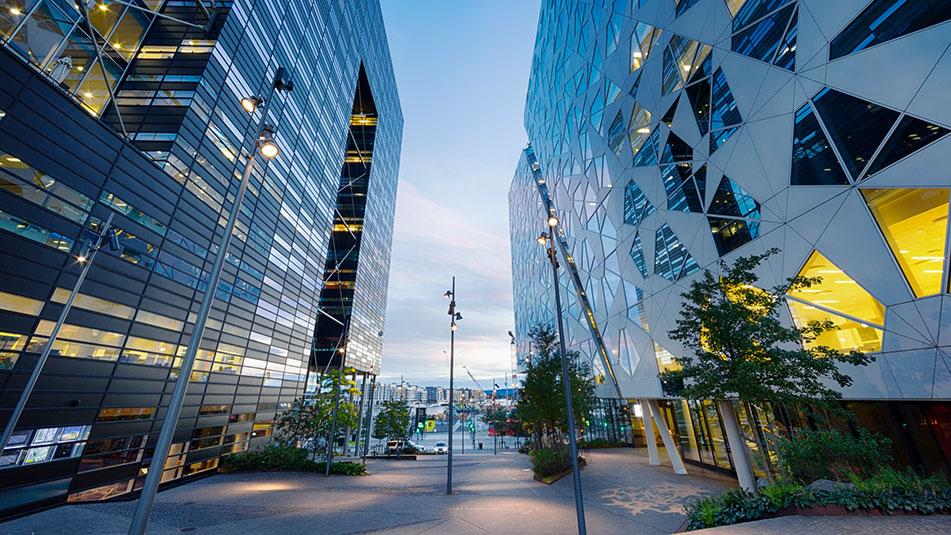Why the National Labor Market and Local Real Estate are More Connected Than You Realize
Any Economics 101 class will teach you that supply and demand are integral to a healthy business - and a healthy economy. At both the national and local levels, the core of a healthy economy is its strong labor market, indicating that supply and demand don’t operate in a vacuum.

As an example we all try to forget: From 2007 to 2010, the US saw the devastating impact of 9 million jobs lost. And while supply and demand of real estate poised for healthy prices prior to 2007, the Great Recession influenced supply to surpass demand. Office and industrial development froze - after all, who would be the tenants to take on the new leasing space when there isn’t any labor? So we face a critical synergistic relationship between the labor market and real estate.
Multiple trends impact today’s labor market and in effect, the real estate market:
1) The construction labor pool is shrinking - The Baby Boomers are getting older and retiring, stretching the labor pool thin. Plus, parts of the country are on the tail end of a construction boom, which is another cause for the thinning labor pool.
2) Cutting costs are top of mind - Technology is taking over every industry, and as more contractors and developers turn to modular construction and other innovations to decrease costs, this can lead to reduced labor requirements - meaning, jobs.
3) The rise in technology is two-fold - On the one hand, technology can eliminate jobs, especially with the rise of automation to ease some of the workers’ burden. Technology can also lead to more jobs, especially in the e-commerce space. After all, while many of us love technology, we only like it until it stops working or malfunctions. No technology is fool-proof.
4) An increase in our “instant demand” world - Forget the days in which receiving your package in 5 business days was okay. Now, retailers are all about instant gratification to appease their customers. Goods are arriving quicker than ever, and commercial real estate needs to keep up. After all, how can a customer receive a product quickly if the product isn’t near a transportation hub.
5) The workforce is changing drastically - Forget the days in which employees went into the office, stayed for 8 hours and headed home. Many jobs these days are primarily remote, or companies have created micro-headquarters or hubs in major cities. While many of us may love remote work (hey, some of us need minimal distractions and quiet throughout the day), every person needs human interaction. People thrive on connectivity and a sense of community, which is where highly-amenitized office developments can become major players.
The above trends can make or break a strong labor market, which provides purchasing power. And purchasing power is critical for the success of commercial real estate. Here are two key reasons why:
Labor Markets Impact Industrial Development

The rise of e-commerce isn’t going away anytime soon, and it leads to e-commerce jobs and a greater need (from the customer’s perspective) to deliver the goods quickly and efficiently. While a strong labor market leads to greater buying power, few people can argue with the need for convenience and quick service, regardless of your buying power.
Integral to quick and efficient delivery is a powerhouse industrial development capable of equipping the latest technologies (i.e. automation or robot-enable functionality) and being located near a major transportation hub, such as Dallas/Fort Worth or Atlanta. Based on pure location, additional industrial development is anticipated in these two areas.
Aside from location and technological functionality, industrial development needs to be quick to transition. E-commerce companies are constantly tracking the next generation’s buying power, which is large (we’re looking at you, Gen Z). In need of morphing to the rise and fall of buying power that makes or breaks success, industrial development is a critical component to ensuring goods are delivered quickly and efficiently.
Labor Markets Influence Office Development

The workforce is changing, anticipating that employees be constantly connected to their jobs. Thus the office space can often feel like home, just as home can feel like the office. A greater demand for on-site amenities that foster creativity, productivity and collaboration reduce the need for employees to leave the office. And as today’s workplaces often serve as satellite or microsites for larger companies, employees can choose to come into the office if they wish, while experiencing all the amenities needed throughout their day - a gym, coffee shop, cafe, huddle spaces and conference rooms, site-wide WiFi, walking trails and outdoor spaces. And if employees have questions about how to get to these microsites - many office developments are already ahead of the game by offering easy access to public transportation via shuttle buses or parking spaces for bikes, scooters and standard (or electric) cars.
The labor market is a critical component to economic success, and especially, at the commercial real estate level. To learn more about the commercial real estate properties in the works from Cresa, visit cresa.com/atlanta or contact Andy Roberts at 404.446.1866.




